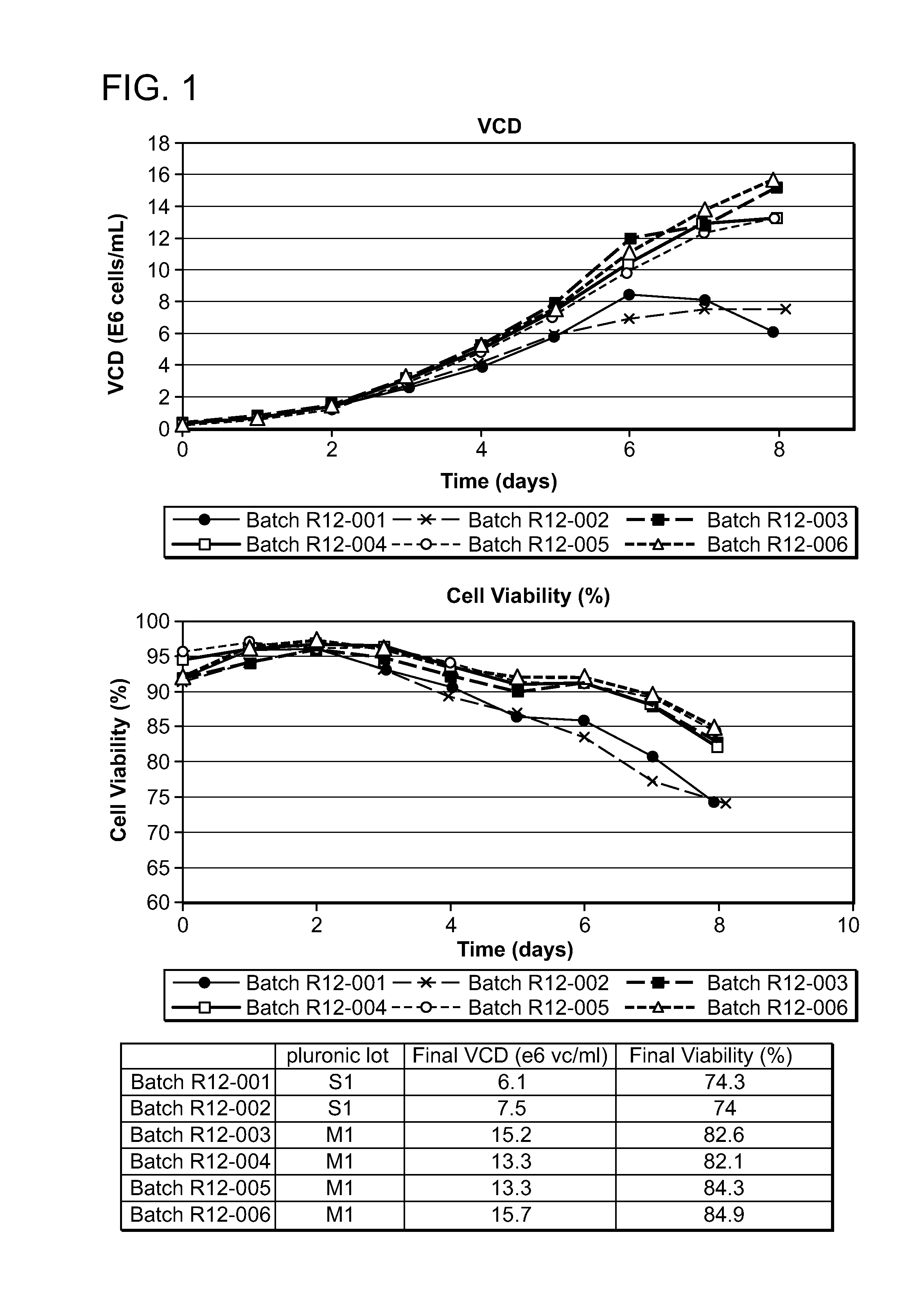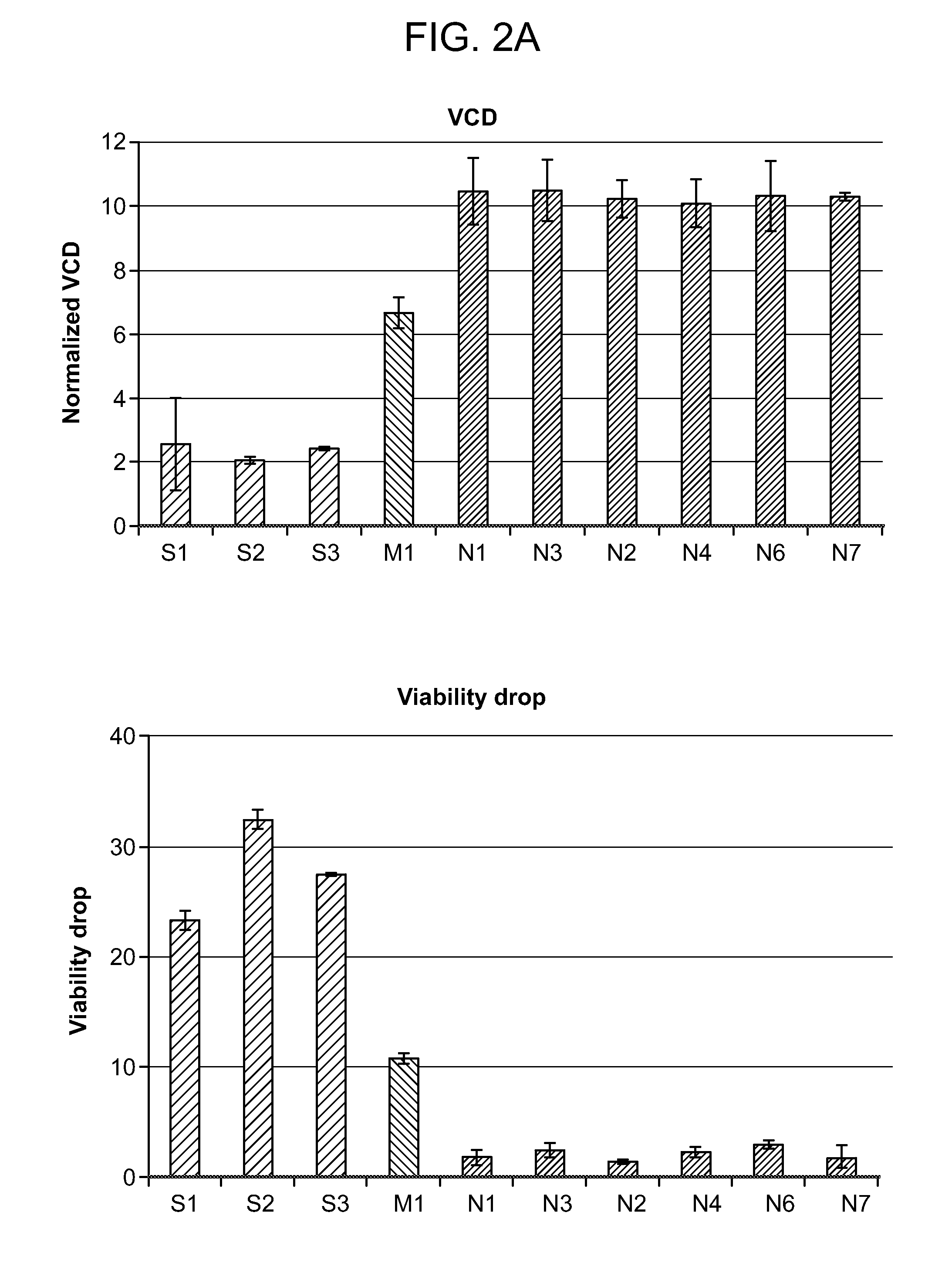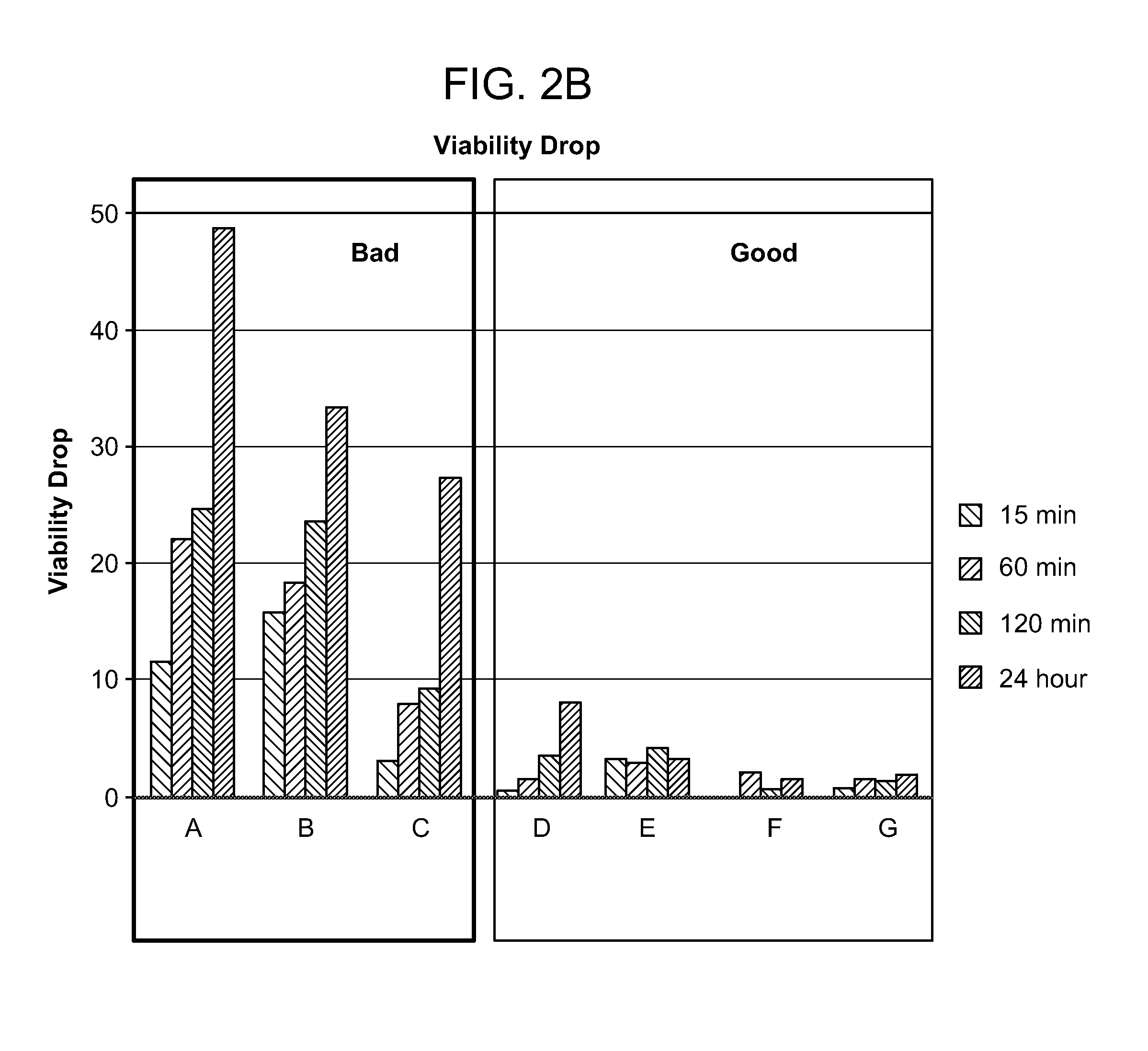Methods of evaluating cell culture additives
a cell culture additive and additive technology, applied in the field of cell culture additive variations, can solve the problems of reducing cell viability, reducing cell density and/or protein titer, inaccurate and time-consuming, etc., and achieving the effects of reducing cell viability, reducing cell viability, and reducing cell viability
- Summary
- Abstract
- Description
- Claims
- Application Information
AI Technical Summary
Benefits of technology
Problems solved by technology
Method used
Image
Examples
example 1
[0138]Conditions—1 L baffled shake flask, 200 mL working volume, 1.5 g / L PLURONIC® F-68, 50 mm orbit shaker, 125 rpm, 3-day culture.
[0139]Results—Three lots (lots S1-S3), resulted in low cell growth with a large drop in viability; six lots (lots N1-N4, N6-N7) resulted in normal cell growth with a minimal drop in viability; and one lot (M1) resulted in performance between the latter two (FIG. 2A). This experiment demonstrates that the small-scale baffled shake flask cell culture system can be used to screen for lot-to-lot variations of cell culture additives such as PLURONIC®. FIG. 2B shows that the difference in viability drop between suitable and unsuitable PLURONIC® F-68 lots can be observed as quickly as 15 minutes.
example 2
[0140]Conditions—1 L baffled shake flask, 150 mL working volume, 1.0 g / L PLURONIC® F-68, 25 mm orbit shaker, 200 rpm, 1-day culture.
[0141]Results—Three lots (S1-S3), resulted in low cell growth with a large drop in viability; eight lots (N1-N8) resulted in normal cell growth with a minimal drop in viability; one lot (M1) resulted in performance between the latter two (FIG. 3). The results of this experiment are consistent with those of Example 1, with the added advantage of being able to detect minor differences within the N1-N8 lots and within the S1-S3 lots.
example 3
[0142]Conditions—Similar to those in Example 2, but with two other cell lines. The cell growth with lot N4 was used as a control (100%) to eliminate the cell line difference.
[0143]Results—The small-scale baffled shake flask cell culture system can be used to detect PLURONIC® variation using difference cell lines, and all three cell lines have similar sensitivity to PLURONIC® variations (FIG. 4).
PUM
| Property | Measurement | Unit |
|---|---|---|
| Temperature | aaaaa | aaaaa |
| Temperature | aaaaa | aaaaa |
| Fraction | aaaaa | aaaaa |
Abstract
Description
Claims
Application Information
 Login to View More
Login to View More - R&D
- Intellectual Property
- Life Sciences
- Materials
- Tech Scout
- Unparalleled Data Quality
- Higher Quality Content
- 60% Fewer Hallucinations
Browse by: Latest US Patents, China's latest patents, Technical Efficacy Thesaurus, Application Domain, Technology Topic, Popular Technical Reports.
© 2025 PatSnap. All rights reserved.Legal|Privacy policy|Modern Slavery Act Transparency Statement|Sitemap|About US| Contact US: help@patsnap.com



